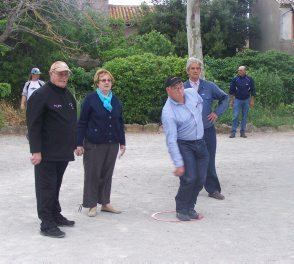Canton Capendu Area 9.6 km² | Region Occitanie Intercommunality Piémont d'Alaric Local time Tuesday 6:27 AM | |
 | ||
Weather 9°C, Wind W at 11 km/h, 82% Humidity Points of interest Château de Miremont, Froment Philippe, Pibouleau Joël | ||
Badens gasthaus imagefilm
Badens is a French commune in the Aude department in the Occitanie region of southern France.
Contents
- Badens gasthaus imagefilm
- Map of 11800 Badens France
- Geography
- History
- Administration
- Demography
- Sites and monuments
- Notable people linked to the commune
- References
Map of 11800 Badens, France
The inhabitants of the commune are known as Badenois or Badenoises.
Geography
Badens is located some 12 km east of Carcassonne and 3 km north of Floure. Access to the commune is by the D206 road from Rustiques in the west which passes through the centre of the commune and the village and continues north-east to Aigues-Vives. The D235 passes through the north of the commune as it goes from Rustiques to join the D135 south-west of Laure-Minervois. The D157 road comes from Marseillette in the south-east through the village and continues north—west to join the D235 in the commune. The D535 goes south from the village to join the D610 just south of the commune. The commune is entirely farmland.
The Ruisseau de Trachaman flows from the north of the commune joining the Ruisseau de Buadelle and continuing south-east to the Ruisseau de Réals which flows east out of the commune. The Ruisseau Maire rises in the west and flows east joining the Ruisseau de Canet which flows east through the village to join the Ruisseau Neuf near Aigues-Vives. The Ruisseau de l'Aqueduc forms the southern border of the commune as it flows east to join the Canal du Midi south-west of the commune.
History
The oldest written mention of Badens is dated November 993 as Villa Badencus in an exchange between Udulgarius, abbot of Caunes, and Roger De Trencavel, Viscount of Carcassonne, concerning Aquaviva which later became Aigues-Vives, a neighbouring village that still exists today.
In 1993 Badens celebrated its 1000 years of existence. On this occasion the village baker baked a cake he called The Millennium. All residents were clothed in medieval costumes and children dressed as knights fought in choreography under the eyes of parents. At the time the commune invited everybody in France called Badens or Ferret to participate in the event and edited a book on the history of the town and with a map of France showing the location of the Badens surnames in France.
Administration
List of Successive Mayors
(Not all data is known)
Demography
In 2010 the commune had 746 inhabitants. The evolution of the number of inhabitants is known from the population censuses conducted in the commune since 1793. From the 21st century, a census of communes with fewer than 10,000 inhabitants is held every five years, unlike larger communes that have a sample survey every year.
Sources : Ldh/EHESS/Cassini until 1962, INSEE database from 1968 (population without double counting and municipal population from 2006)
